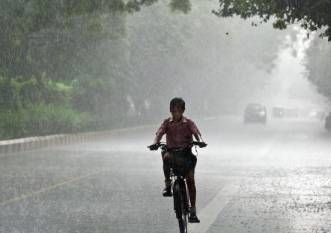NEW DELHI, 27 May 2025: India is poised for a stronger-than-usual Southwest Monsoon in 2025, bringing a wave of optimism for farmers and rural communities. The India Meteorological Department (IMD) on Tuesday forecast above-normal rainfall between June and September, predicting 106% of the Long Period Average (LPA) with a margin of error of ±4%.
The monsoon forecast bodes well for agriculture, particularly in Central and South Peninsular India, which are expected to receive significantly above-normal precipitation. Northwest India is likely to experience normal rainfall, while Northeast India may fall short of expectations with below-normal rainfall anticipated.
The Monsoon Core Zone, responsible for most of India's rainfed crop production, is expected to benefit from above-average rainfall, giving a solid head start to the Kharif cropping season. June 2025 is also projected to bring above-normal rainfall nationwide, except for select southern and northeastern pockets.
The early onset of rains is expected to aid timely sowing, improve soil moisture, and support groundwater recharge. This will likely bolster production of key crops such as rice, pulses, and oilseeds.
In terms of temperatures, maximum temperatures in June will likely remain normal to below normal across most regions, though parts of Northwest and Northeast India may see above-normal highs. Meanwhile, minimum temperatures are likely to stay above normal in many areas, excluding some parts of Central and South India.
Image crerdit: orissapost.com
Heatwave risk is expected to be below normal, especially in Northwest, Central, and East India, reducing the likelihood of early summer stress on crops and people. The favorable forecast is attributed to neutral ENSO and Indian Ocean Dipole (IOD) conditions, although a weak negative IOD may emerge during the season.
Of India’s 36 meteorological subdivisions, 34 are expected to see normal to above-normal rainfall, including Punjab, Haryana, Gujarat, Maharashtra, Andhra Pradesh, Tamil Nadu, and Kerala. Only Arunachal Pradesh and Assam-Meghalaya are likely to receive below-normal rainfall.
While the forecast promises economic and agricultural benefits, authorities are advised to stay alert for secondary challenges such as flooding, waterlogging, and disease outbreaks in vulnerable areas.
The IMD will continue issuing extended and short-range forecasts to assist farmers, disaster management teams, and policymakers in planning and resource allocation during the monsoon period.
With favorable conditions and timely action, the 2025 monsoon could become a major catalyst for agricultural output, water resource management, and rural prosperity.




















